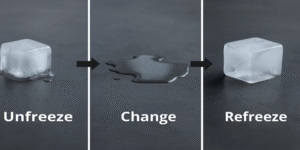Accurate referencing is one of the most important aspects of academic writing. It not only acknowledges the original sources of ideas and information but also strengthens your arguments and demonstrates academic integrity. For many students, however, getting the format right can be challenging. This article presents a quiz-style guide to help you understand the essentials of Harvard referencing, while also exploring why proper citation matters. Each question is followed by the correct answer, along with an explanation to help you learn from common mistakes.
Question 1
Which of the following shows the correct format for referencing a book in the Reference section?
- a) Saunders, MNK, Lewis, P and Thornhill, A (2003) Research Methods for Business Students (3rd edn), Pitman Publishing
- b) Saunders, MNK, Lewis, P and Thornhill, A (2003) Research Methods for Business Students (3rd edn), London, Pitman Publishing
✅ Correct Answer: Saunders, MNK, Lewis, P and Thornhill, A (2003) Research Methods for Business Students (3rd edn), London, Pitman Publishing
Explanation: In the Harvard system, a book reference must include the authors’ surnames and initials, year of publication, title in italics, edition (if not the first), place of publication, and the publisher. The incorrect option is missing the place of publication.
Question 2
Which of the following sentences, if used in an essay, should have citations within them?
- a) Many researchers have stated that students learn best when they actively participate in workshops.
b) Last year, the government spent more than five million pounds on the project.
c) I would tend to disagree with their viewpoints.
d) There are seven days in a week.
✅ Correct Answer: a and b only
Explanation:
- a: Refers to other researchers’ findings → requires a citation.
- b: Factual, statistical information from an external source → requires a citation.
- c: Your opinion → does not need a citation.
- d: Common knowledge → no citation required.
Question 3
A work written by John Smith in 2003 should be cited within the text according to the following:
✅ Correct Answer: It might be (Smith, J 2003) if there is another person with the surname Smith in the Reference section. If there is not another Smith, it should be (Smith 2003).
Explanation: When two or more authors share the same surname, you should include the initials to avoid confusion. If only one “Smith” appears in your references, then the surname and year are sufficient.
Question 4
Why should you include references within a text?
- a) To give credit where credit is due
b) To provide enough information so that the reader can find the original source
c) To avoid charges of plagiarism
d) To demonstrate that your arguments are supported by evidence
✅ Correct Answer: All of the above
Explanation: Referencing shows academic honesty, acknowledges others’ work, allows readers to verify claims, and strengthens your arguments by demonstrating that they are informed by credible sources.
Question 5
Which of the following is an example of the Harvard system of referencing within a text?
- a) Many studies show these conclusions (Doe 2000; Jones 1999; Smith 2003).
- b) Many studies show these conclusions [1,2,3].
✅ Correct Answer: a
Explanation: The Harvard style uses the author’s surname and year of publication in brackets. The numbering system in option b is an example of the Vancouver referencing style, not Harvard.
Question 6
You find an interesting crime statistic from the National Assembly of Wales (NAW) website on 20 February 2006. No author is listed. Which is the correct citation within the text?
✅ Correct Answer: (National Assembly of Wales 2006)
Explanation: When no individual author is named, cite the organisation (corporate author) followed by the year of publication.
Question 7
If you have found three distinct publications from John Doe written in 1999, 2001 and 2005, and want to mention them in the same sentence, what format should you use?
✅ Correct Answer: (Doe 1999; 2001; 2005)
Explanation: When citing multiple works by the same author, list the surname once, followed by the different years separated by semicolons.
Question 8
You accessed an article titled ‘RFID: Unlocking high performance in supply chain planning’ by Patrick M Byrne in Logistics Management (September 2005, Vol. 44, Issue 9, pp. 29–30) through EBSCO on 20 February 2006. The URL is given. What is the correct in-text citation?
✅ Correct Answer: (Byrne 2005)
Explanation: In-text citations in Harvard style require only the author’s surname and year. Full details, including the article title, journal, volume, issue, pages, and URL, belong in the Reference list.
Question 9
You find an article titled ‘Historical Crime Digest’ on the National Assembly of Wales (NAW) website, published in 2006, with no author. What is the correct Reference list format?
✅ Correct Answer:
National Assembly of Wales (2006) ‘Historical Crime Digest’ [online] Available from: http://www.wales.gov.uk/subicsu/content/historical/chap2-e.pdf (accessed 20 February 2006)
Explanation: For web sources without a personal author, use the corporate author (e.g. National Assembly of Wales), followed by the year, the title in quotation marks, the format ([online]), the URL, and the date accessed.
Question 10
You access the article ‘RFID: Unlocking high performance in supply chain planning’ by Patrick M Byrne, published in Logistics Management, Volume 44, Issue 9, pp. 29–30 (September 2005) via EBSCO. What is the correct Reference list format?
✅ Correct Answer:
Byrne, Patrick M. (2005) ‘RFID: Unlocking high performance in supply chain planning’, Logistics Management, 44(9), pp. 29–30.
Explanation: Journal references in Harvard style require author(s), year, article title in quotation marks, journal title in italics, volume(issue), and page range.
Question 11
Which of the following shows the correct format for referencing an e-mail in the Reference section?
✅ Correct Answer:
Jones, D (2006) ‘Requested Information’ (e-mail to author) [online].
Explanation: For emails, cite the sender, year, subject line in quotes, followed by (e-mail to author) and [online].
Question 12
A work written by only two authors, such as John Doe and John Smith in 2001, should be cited in the text as:
✅ Correct Answer: (Doe and Smith 2001)
Explanation: When citing two authors, include both surnames separated by and, followed by the year.
Question 13
Which of the following shows the correct format for referencing a journal in the Reference section?
✅ Correct Answer:
Story, J, Cressey, P, Morris, T and Wilkinson, A (1997) ‘Changing employment practices in UK banking: case studies’, Personnel Review, 26(1), pp. 24–42.
Explanation: The correct Harvard format includes all authors, the year, article title in quotes, journal title in italics, volume(issue), and page numbers.
Question 14
A work written by John Doe in 2004 should be cited in the text as:
✅ Correct Answer: (Doe 2004)
Explanation: A single author reference requires the surname and year.
Question 15
You read an article in The Guardian on 20 February 2006, with no author mentioned. What is the correct in-text citation?
✅ Correct Answer: (The Guardian 2006)
Explanation: If no individual author is listed, cite the corporate author (publication name) and the year.
Question 16
You find the following passage in Saunders, Lewis and Thornhill (2003), which quotes Anderson and Poole (2001). You did not read the original Anderson and Poole text. How should you cite it?
✅ Correct Answer:
The Harvard system was developed at Harvard University in the 1930s (Anderson and Poole 2001; cited by Saunders et al. 2003).
Explanation: When citing a source you found second-hand, you must acknowledge both the original author and the source you consulted, using “cited by.”
Question 17
A work written by John Doe, John Smith, Robert Jones and James Miller in 2001 should be cited in the text as:
✅ Correct Answer: (Doe et al. 2001)
Explanation: When a work has three or more authors, you cite the first author’s surname followed by et al. and the year.
Question 18
If you have several distinct sources that state the same idea, how should you cite them?
✅ Correct Answer:
Many openly confess to the belief that the earth is flat (Doe 2003; Jones 2001; Flat Earth Society 2006; Smith 2004).
Explanation: When multiple sources support the same point, list them all in one set of parentheses, separated by semicolons, in chronological order.
Question 19
Consider the following examples of citations within a text. Which comply with the Harvard system?
- a) Bell (1993) describes a number of different strategies for …
b) One particular source on methodology (Bell 1993) has indicated that …
c) “Reading … may help you to devise a theoretical or analytical framework as a basis for the analysis and interpretation of data.” (Bell 1993, p. 33)
d) Bell (1993, p. 33) states that “Reading may help you to devise a theoretical or analytical framework as a basis for the analysis and interpretation of data.”
✅ Correct Answer: All of the above
Explanation: The Harvard style is flexible. You may incorporate citations into the text or place them in brackets at the end. When quoting directly, always include the page number.
Question 20
If you find two publications by the same author in the same year, how should you cite them?
✅ Correct Answer:
Researchers have found interesting results (Smith 2006a). When the same study was repeated at a later date, they found similar results (Smith 2006b).
Explanation: When an author has multiple works in the same year, differentiate them with letters (a, b, c) after the year, both in the text and in the Reference list.
Key Takeaways
- Always include the author, year, title, place of publication, and publisher when referencing books.
- Use citations whenever you refer to someone else’s ideas, research, or statistics.
- Distinguish between your own opinions and external sources.
- Cite corporate authors when no individual is listed.
- For multiple works by the same author: use (Author Yeara; Yearb).
- When directly quoting, always include the page number.
- Use tools like Turnitin to ensure originality, and rely on education, training, referencing skills, and careful assessment design to prevent plagiarism.









